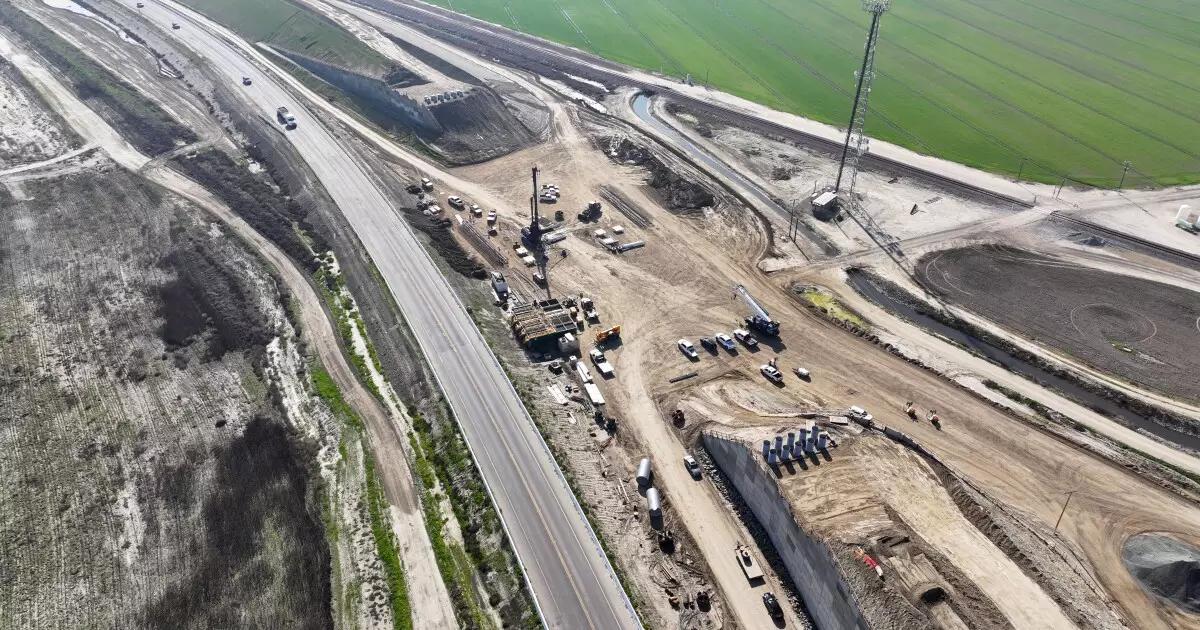99 Billion Reasons Why California’s Bullet Train Is an Overhyped Failure

California’s high-speed rail project, once hailed as the future of transportation, has become a symbol of governmental excess and mismanagement. Designed to revolutionize travel from Los Angeles to San Francisco, the project has faced relentless delays, ballooning costs, and mounting skepticism from skeptics and supporters alike. Despite promises of economic revitalization and cutting-edge technology, the reality has been a series of broken commitments and squandered taxpayer dollars. The federal government’s recent decision to terminate $4 billion in grants exposes the project’s fundamental failures, underscoring that ambitious visions often crumble under the weight of misplaced optimism and poor planning.
Systematic overpromising has become the hallmark of California’s high-speed rail. Voters approved $10 billion in bonds in 2008 — a significant figure at the time — based on optimistic projections of completion by 2020 at a modest $33 billion. However, subsequent delays, inflation, regulatory hurdles, and political infighting have caused costs to skyrocket to an astonishing $128 billion. This staggering figure highlights a reckless disconnect between initial promises and reality. It reflects a broader failure of government oversight—where lofty goals are prioritized over practical execution, creating a cycle of false hope that ultimately drained resources that could have been better allocated elsewhere.
The Political Dance: A Debate of Ideals and Realities
At the heart of this controversy lies a fundamental clash between political ideologies. For center-right policymakers, the high-speed rail has become a poster child for government overreach—an expensive, ineffective project that siphons funds from more urgent needs like infrastructure repairs, public safety, and economic growth. Critics argue that federal dollars should be spent efficiently, and federal grants should come with accountability, not blank checks that enable the endless pursuit of ambitious but unrealistic visions.
The Trump administration’s refusal to continue federal funding is not merely a shot at mismanagement, but a declaration that American infrastructure projects should be rooted in practicality and results. The administration’s stance emphasizes fiscal responsibility and skepticism regarding government-led mega-projects, particularly when they threaten to divert funds from more immediate priorities. Yet, opponents from California’s political sphere counter that halting federal aid is an attack on the state’s sovereignty and economic future, especially as the project has received support from local officials and voters who see it as a long-term investment.
This ongoing debate reflects a broader philosophical disagreement—whether large infrastructure projects serve the public good or serve political vanity. While supporters long for a transformative high-speed rail that can alleviate road congestion and reduce emissions, opponents see it as a costly misadventure more aligned with political grandstanding than genuine progress.
Corruption of Vision: The Cost of Political Short-termism
Fundamentally, California’s bullet train epitomizes how political short-termism breeds long-term failure. Vigilant oversight was often replaced by complacency, with repeated promises of timely delivery overshadowed by unending delays. The project has been repeatedly mischaracterized as a “boondoggle,” and rightly so; no amount of rosy projections can obscure the cycle of over-promising, under-delivering, and escalating costs.
The federal government’s move to rescind funds signals a recognition that the state has failed to meet its obligations—not only in terms of construction progress but also in transparency and accountability. The project’s overestimated ridership forecasts and underanticipated costs have created a credibility crisis. It’s a cautionary tale for taxpayers who are increasingly forced to foot the bill for political vanity projects rather than practical infrastructure with tangible results.
The fact that California’s leadership is now seeking private investment to salvage the project exposes the core issue—the reliance on taxpayer money for what appears to be a project that cannot stand on its own merits. When government overreach results in obscene costs and negligible benefits, it becomes an ideological battleground, revealing the flaws of centralized planning and prolonged political interference.
Economic and Political Consequences: A Wake-up Call for Fiscal Responsibility
The California high-speed rail project is a stark reminder that visionary projects require sober, realistic management. Throwing billions of dollars at a project riddled with delays and cost overruns is not merely bad governance—it’s an abdication of responsibility. Federal officials are right to scrutinize and pull back funding, insisting that large projects fulfill their promises before more public money is committed.
For center-right thinkers who emphasize fiscal conservatism, this situation underscores the importance of accountability, private-sector involvement, and pragmatic planning. Relying on federal grants for megaprojects should be contingent upon strict milestones and transparent reporting. When these conditions aren’t met—and costs spiral out of control—cutting off the funds becomes a necessary step to safeguard taxpayer interests.
The challenge moving forward is to balance ambition with prudence. California’s high-speed rail has become an emblem of what happens when political enthusiasm eclipses planning discipline. For the state and the nation, it must serve as a lesson: infrastructure investments should prioritize efficiency, transparency, and tangible results—principles that political vanity projects often neglect.





